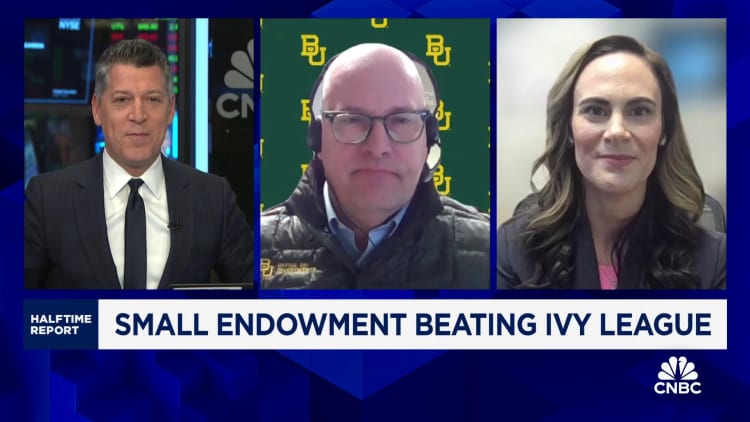Baylor University Beats Ivy League in Endowment Performance Rankings

Watch out, Ivies, there’s a new endowment performer in town. Baylor University has outperformed the Ivy League colleges in terms of endowment returns. Despite having a smaller endowment of $2 billion compared to the Ivy League institutions, Baylor generated a remarkable 6.4% return for the fiscal year that ended on June 30. In comparison, Harvard, with the largest endowment of $50.7 billion, achieved a modest return of 2.9%.
Strong Performance and Consistency
Baylor’s impressive performance extends beyond a single year. Over the past five years, the university’s annualized return of 10.9% has surpassed all Ivy League colleges, except for Brown University, which achieved a return of 13.3%. Brown’s endowment in fiscal 2023 was more than three times higher than Baylor’s at $6.6 billion. Chief Investment Officer David Morehead attributes Baylor’s success to their keen ability to identify market dislocations and make strategic investments accordingly.
“It’s really driven by the managers, and then if we, on the edges, are seeing … a dislocation, we could allocate more money into high yield, allocate more money into [emerging markets] — something like that,” says Morehead. “We’re really allocators.”
Morehead’s expertise and strategic approach have significantly contributed to Baylor’s success. Since joining the university in 2011, Baylor’s endowment has more than doubled.
National Endowment Trends
Baylor’s achievement is particularly notable considering the overall national trend in endowment returns. According to the latest study by the National Association of College and University Business Officers and Commonfund, endowment returns were up 7.7% in fiscal 2023, a significant recovery compared to the 8% decline in the previous year. However, this gain falls short of the exceptional returns seen in fiscal 2021, which reached 30.6%.
Baylor’s Strategy and Focus
Morehead emphasizes that Baylor’s investment team focuses on portfolio liquidity as part of their strategy. By carefully assessing their portfolio needs in advance, they are able to capitalize on market dislocations as they occur. Morehead states that their initial allocations into or away from a market segment are triggered by a significant move of 20% or more in either direction. Taking a long-term investment perspective, Baylor’s team remains unaffected by short-term market fluctuations.
Additionally, Morehead reveals that his team is confident in their medium-term investment choices, which include bets on helium, biotech, and small caps. With the semiconductor industry experiencing growth and record-breaking rocket launches, the demand for helium is expected to rise. This predicted surge in demand could drive helium prices higher.
“Our broader expectation is that the major tech companies will start to develop their own chips so as not to be beholden to Nvidia going forward,” Morehead adds.
Baylor University’s remarkable performance in endowment returns highlights the value of astute investment strategies and a long-term investment perspective. To stay updated on finance and business news, visit Business Today.
